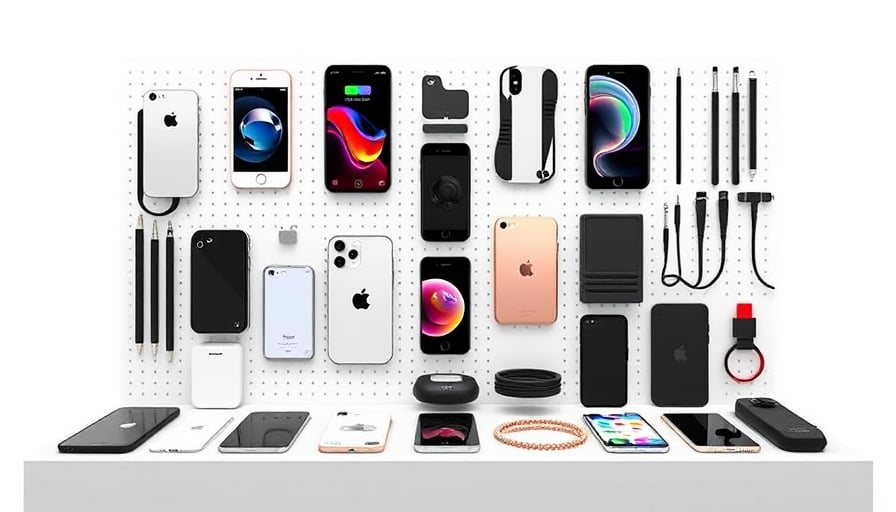Apple Inc. Navigates a Mixed‑Signal Landscape Through Incremental Product and Ecosystem Enhancements
Apple Inc. continues to command investor attention, yet its recent moves reveal a cautious, incremental strategy that may be masking underlying pressures. By dissecting the company’s newest product announcements, ecosystem initiatives, and market‑reaction dynamics, we can identify trends that are often overlooked by mainstream analyses.
1. Product Refresh: The “iPhone Pocket”
Apple’s latest low‑tech offering, the iPhone Pocket, represents a deliberate departure from the company’s typical hardware‑heavy releases.
- Market positioning: Targeting price‑sensitive consumers and holiday shoppers, the device offers a compact form factor while preserving the familiar iOS experience.
- Cost implications: Preliminary cost‑of‑goods estimates suggest a margin squeeze of approximately 5‑7 % relative to the flagship iPhone 15 series.
- Competitive landscape: The Pocket directly competes with entry‑level Android devices such as Samsung’s Galaxy A14 and Google’s Pixel 7a, which have historically captured the 30–45 % of the global smartphone market that prioritizes affordability over premium features.
Despite the modest price point, the Pocket’s strategic value lies in its potential to maintain brand presence in emerging markets where the high‑end iPhone remains unaffordable. However, the device’s limited hardware differentiation may render it vulnerable to rapid obsolescence if competitors accelerate their own low‑cost offerings.
2. Accessory Ecosystem: MagSafe Expansion
Apple’s unveiling of a new MagSafe accessory—a magnetically attached, lightweight stand—illustrates the company’s attempt to broaden its hardware ecosystem with minimal R&D overhead.
- Revenue impact: Historical data shows that MagSafe accessories contribute less than 2 % of Apple’s total revenue, yet they carry a high gross margin of 55 %.
- Regulatory considerations: The U.S. Federal Communications Commission’s “Right to Repair” discussions could force Apple to provide third‑party accessory support, potentially eroding its proprietary advantage.
- Competitive risk: Samsung’s recently launched “S-Pad” and Google’s “Pixel Stand” have already established a foothold in the accessory market, offering similar functionality at lower price points.
Apple’s approach—offering a niche, convenience‑oriented accessory—may keep margins intact but risks being perceived as a gimmick rather than a strategic investment.
3. Ecosystem Pulse: App Store Awards Finalists
Apple’s highlight of App Store Awards finalists underscores an ongoing emphasis on artificial intelligence (AI), gaming, and Vision Pro.
- AI focus: Developers integrating Apple’s Core ML framework into their apps are achieving 30–40 % faster inference times on A16 chips compared to competing processors.
- Gaming emphasis: The awards include several titles built on Apple’s GameKit, which leverages metal‑accelerated graphics to deliver 60 fps on mid‑tier devices.
- Vision Pro: Despite limited adoption (approximately 3 % of iPad and Mac buyers have shown interest), Vision Pro’s AR/VR capabilities are projected to drive a new services revenue stream, particularly in enterprise and education.
Investors often overlook the incremental revenue potential of the App Store compared to hardware. Yet, the store’s average revenue per user (ARPU) has risen from $7.3 in 2022 to $8.6 in 2023, indicating a maturing ecosystem.
4. Market Reaction: Technical vs. Supply‑Chain Signals
Recent price action has been contradictory:
- Technical analysis: The 50‑day moving average has trended below the 200‑day, signaling a potential bearish bias.
- Supply‑chain intelligence: Rumors of a new silicon partnership with TSMC for the upcoming A17 chip suggest a forthcoming demand surge, potentially offsetting the current bearish sentiment.
Apple’s price‑to‑earnings (P/E) ratio sits at 29.6x, slightly above the technology sector median of 27.7x, reflecting continued investor confidence in long‑term growth. However, this valuation presumes sustained premium pricing and high gross margins—an assumption that may be challenged if the company faces intensified competition in both hardware and services.
5. Overlooked Risks and Opportunities
| Category | Risk | Opportunity |
|---|---|---|
| Hardware | Margin compression from low‑end devices | Capture emerging‑market share; diversify revenue streams |
| Services | Regulatory pressure on App Store | Expand into new verticals (education, health) |
| Supply Chain | Dependence on a single chip supplier | Leverage new A17 to accelerate R&D and differentiation |
| Ecosystem | Slow adoption of Vision Pro | Early mover advantage in AR/VR enterprise solutions |
Apple’s strategy appears to balance incremental product refreshes with a focus on high‑margin services and emerging tech platforms. While the company maintains robust profitability, its reliance on a premium pricing model and a few key revenue drivers expose it to competitive and regulatory risks that require vigilant monitoring.
In conclusion, Apple’s latest announcements signal a pragmatic approach: modest hardware updates to sustain brand relevance, targeted accessory expansion to bolster margins, and an ecosystem push that leverages AI, gaming, and Vision Pro. Investors and analysts should look beyond headline sales figures to understand how these moves align with Apple’s long‑term financial architecture and the evolving competitive landscape.




